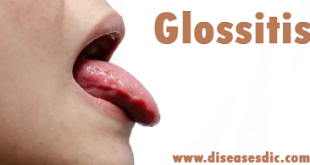Definition
Narcolepsy is a chronic sleep disorder characterized by overwhelming daytime drowsiness and sudden attacks of sleep. People with narcolepsy often find it difficult to stay awake for long periods of time, regardless of the circumstances. Narcolepsy can cause serious disruptions in your daily routine.
Sometimes, narcolepsy can be accompanied by a sudden loss of muscle tone (cataplexy) that leads to weakness and loss of muscle control. Cataplexy is often triggered by a strong emotion, most commonly laughter.
Narcolepsy
Epidemiology
- Narcolepsy is not a rare condition, but it is frequently misdiagnosed and not as well understood as many similarly prevalent disorders. It affects approximately 1 in every 2,000 people worldwide and there are as many as 200,000 cases in the United States. Only a quarter of these have been diagnosed, and it is not uncommon for six to eight years to pass before a proper diagnosis is made.
- The disorder affects men and women equally. There are an estimated 3 million cases around the world. Certain countries have a higher occurrence of cases, like Japan, where it is as common as 1 in 500. Other countries, like Israel, have a very low number of cases.
- Narcolepsy can develop later in life or in childhood but the majority of cases begin to show symptoms between the ages of 11 and 17. Children have been diagnosed as early as age 3.
Types
There are two types of narcolepsy:
Narcolepsy with cataplexy: This type of narcolepsy involves a combination of excessive daytime sleepiness and cataplexy. Cataplexy is when you have attacks that cause a sudden loss of muscle tone while you are awake. It may lead to slurred speech and buckling knees, or in more severe cases complete paralysis. These events are usually triggered by strong emotions such as joy, surprise, laughter or anger.
Narcolepsy without cataplexy: This type of narcolepsy occurs when you have continuous excessive sleepiness but no cataplexy. You may take a nap for a couple of hours and wake up feeling refreshed. But after a short time, you feel tired again.
Risk factors
Epidural Hematoma
An epidural hematoma happens when a mass of blood forms between your skull and brain. Learn how to prevent and treat this life-threatening condition.
Head Injury
A head injury is an injury to your brain, skull, or scalp. All head injuries should be treated seriously and assessed by a doctor.
Obesity
Obesity is an epidemic in the U.S. This condition puts people at a higher risk for serious diseases, such as type 2 diabetes, heart disease, and cancer.
Causes of narcolepsy
- The exact cause of narcolepsy is unknown. There may be many causes. Most people with narcolepsy have low levels of the chemical hypocretin (hi-poe-KREE-tin). Hypocretin is an important neurochemical in your brain that helps regulate wakefulness and REM sleep.
- Hypocretin levels are particularly low in those who experience cataplexy. Exactly what causes the loss of hypocretin-producing cells in the brain isn’t known, but experts suspect it’s due to an autoimmune reaction.
- Research indicates a possible association with exposure to the H1N1 virus (swine flu) and a certain form of H1N1 vaccine that’s currently administered in Europe. It’s not yet known if the virus directly triggers narcolepsy or whether exposure to the virus increases the likelihood that someone will have narcolepsy.
- In some cases, genetics may play a role.
Symptoms of narcolepsy
Symptoms of narcolepsy include:
Excessive daytime sleepiness (EDS): In general, EDS interferes with normal activities on a daily basis, whether or not a person with narcolepsy has sufficient sleep at night. People with EDS report mental cloudiness, a lack of energy and concentration, memory lapses, a depressed mood, and/or extreme exhaustion.
Cataplexy: This symptom consists of a sudden loss of muscle tone that leads to feelings of weakness and a loss of voluntary muscle control. It can cause symptoms ranging from slurred speech to total body collapse, depending on the muscles involved, and is often triggered by intense emotions such as surprise, laughter, or anger.
Hallucinations: Usually, these delusional experiences are vivid and frequently frightening. The content is primarily visual, but any of the other senses can be involved. These are called hypnagogic hallucinations when accompanying sleep onset and hypnopompic hallucinations when they occur during awakening.
Sleep paralysis: This symptom involves the temporary inability to move or speak while falling asleep or waking up. These episodes are generally brief, lasting a few seconds to several minutes. After episodes end, people rapidly recover their full capacity to move and speak.
Diagnosis and test
Since narcolepsy is not a common sleep problem, many primary care physicians have difficulty diagnosing the sleep disorder. A board-certified sleep medicine physician can help make the proper diagnosis.
In-lab overnight sleep study
Also known as a polysomnogram, a sleep study requires you to stay overnight at a sleep center so a physician can observe and measure your sleep. You will sleep with sensors attached to different parts of your body that record your brain waves, heartbeat and other aspects of your sleep. This test will show if there are other problems, such as sleep apnea, that are causing your excessive daytime sleepiness or sleep attacks. Read more…
Multiple Sleep Latency Test (MSLT)
Also known as a nap study, the MSLT measures your daytime sleepiness. The test requires you to attempt to take multiple naps a sleep lab at set times throughout the day. It is used to see how quickly you fall asleep in quiet daytime situations. For each nap trial you are asked to lie quietly in bed in a dark room and try to go to sleep. Most people with narcolepsy fall asleep in an average of three minutes during the MSLT. Read more…
Hypocretin Level Measurement
In rare cases, the physician will need to measure your hypocretin (orexin) levels. Hypocretin is the neurotransmitter that controls arousal, wakefulness and appetite. People with narcolepsy with cataplexy usually have a lack of hypocretin. Because this exam requires a lumbar puncture (spinal tap) it is rarely used.
Hypocretin-producing neurons
Treatment and medications
There is no cure for narcolepsy, but the sleep disorder is manageable through medication and lifestyle changes. It may take some time for the board certified sleep physician to find the right treatment plan for you. This may include:
Stimulants
The sleep medicine physician is likely to prescribe you a stimulant to help you stay awake during the day. Many physicians choose to prescribe modafinil (Provigil) first for narcolepsy because it is less addictive and has fewer side effects compared to other stimulants. Other medications prescribed for narcolepsy include methylphenidate (Ritalin) or amphetamines.
SSRIs or antidepressants
These medications are often prescribed to treat cataplexy, as well as other narcolepsy symptoms including hallucinations and sleep paralysis. The effects vary depending on the medication your doctor recommends. In severe cases of cataplexy, your doctor may prescribe sodium oxybate.
Lifestyle adjustments
Your physician may also recommend lifestyle changes that can help you manage the symptoms of narcolepsy. You will need to keep a consistent sleep schedule by going to sleep and waking up at the same time every day, including weekends. If possible, schedule short 20-minute naps throughout the day. To increase your energy through the day, try to get regular exercise and avoid use of tobacco, alcohol or drugs.
Prevention of narcolepsy
There are no guidelines for preventing narcolepsy itself. However, you can try to prevent symptoms.
Avoid activities that carry a risk of injury from a sudden sleep attack, such as:
- Driving
- Climbing ladders
- Using dangerous machinery
- Exercise on a regular basis.
- Get adequate sleep at night.
Lifestyle and Home Remedies
Take several short naps a day: (10-15 minutes) to alleviate excessive daytime sleepiness.
Keep a consistent sleep schedule: Go to sleep and wake up at the same times every day, including weekends.
Avoid caffeine and alcoholic beverages: 2-3 hours before bedtime as these substances can worsen symptoms.
Get regular exercise: Daily exercise 4-5 hours before bedtime can help improve quality of sleep as well as alleviate symptoms of daytime drowsiness.
Try a relaxing routine just before bedtime: A relaxing bath or reading a good book before bedtime can help promote better sleep at night.
Talk to others about your condition: Having the love and support from those close to you can go a long way in treatment. Furthermore, your coworkers, employers, and teachers should also be aware of your condition to help accommodate your needs. Support groups can also be helpful in connecting with others suffering from the same condition. At support groups you can also learn about the latest developments in medicine, get coping tips from others, other practical help, and even emotional support.
 Diseases Treatments Dictionary This is complete solution to read all diseases treatments Which covers Prevention, Causes, Symptoms, Medical Terms, Drugs, Prescription, Natural Remedies with cures and Treatments. Most of the common diseases were listed in names, split with categories.
Diseases Treatments Dictionary This is complete solution to read all diseases treatments Which covers Prevention, Causes, Symptoms, Medical Terms, Drugs, Prescription, Natural Remedies with cures and Treatments. Most of the common diseases were listed in names, split with categories.







